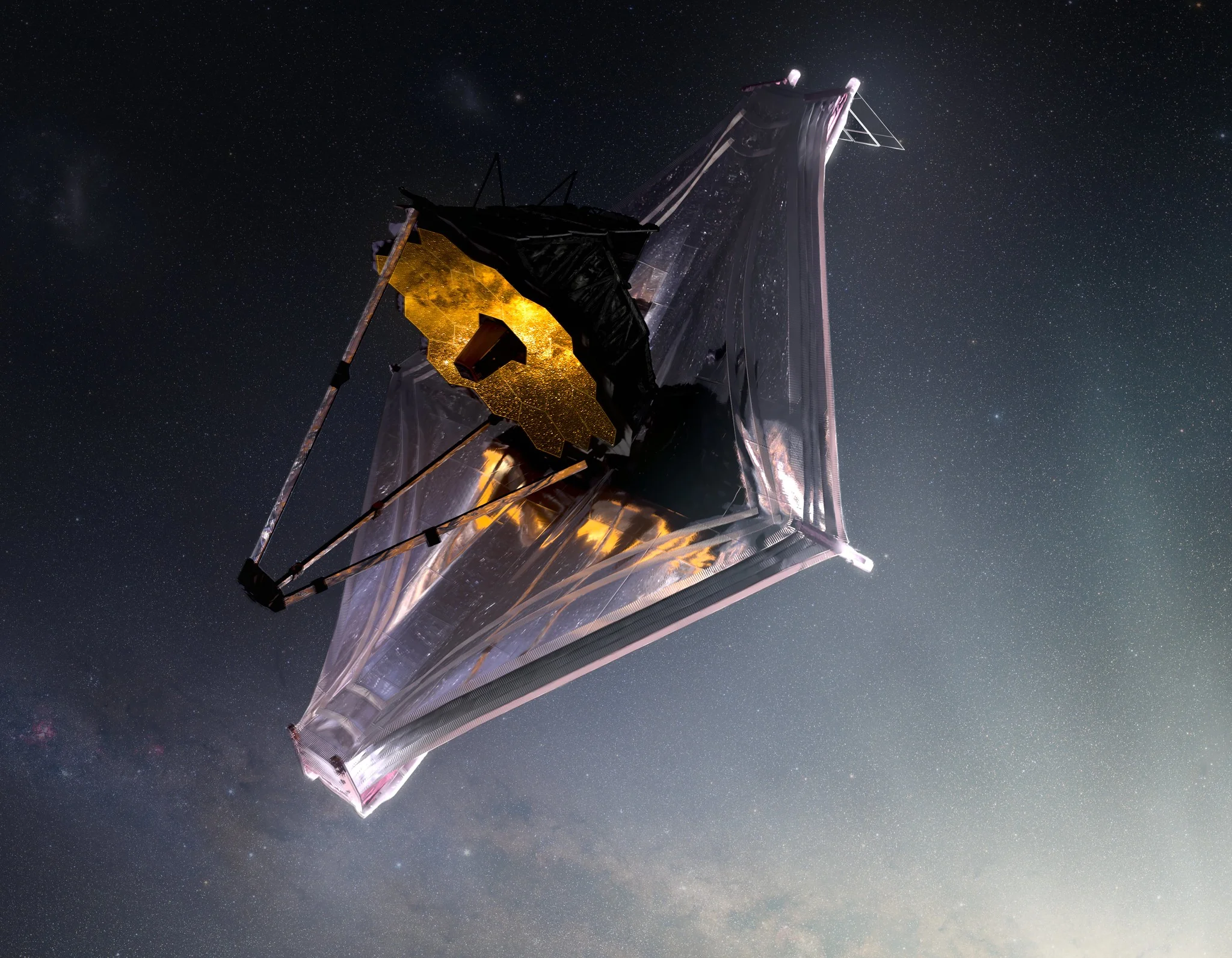Imagine yourself in the darkness of the night, gazing up at the starry sky, pondering over the mysteries that the vast universe holds. What lies beyond what we can see with our naked eyes? How did galaxies and stars form? These questions have driven humanity to explore space and unravel the cosmic enigmas that surround us.
In this pursuit, emerges the James Webb Space Telescope, a technological marvel poised to reshape our understanding of the cosmos. Join me on this journey to uncover the enigmatic purpose that propels the JWST and how it is destined to reshape our view of the universe.
Cutting-Edge Technology and Cosmic Objectives

The James Webb Space Telescope (JWST) is far more than a mere observational instrument. It is a complex and meticulously crafted machine that seeks to answer some of humanity's deepest questions about the cosmos.
Successfully launched on December 25, 2021, the JWST has taken its position at the Lagrange Point L2, approximately 1.5 million kilometers away from Earth. Its next-generation optical technology is a marvel in itself, composed of a series of foldable mirrors working in unison to capture and focus light from distant objects in space.
Unraveling the Universe's Origin
The James Webb Space Telescope has a paramount objective: to unravel the origins of the universe. Its ability to detect infrared light allows it to penetrate through the cosmic dust that obstructs visible light. This is crucial for observing the oldest and most distant regions of the universe, where the first stars and galaxies formed shortly after the Big Bang.
By observing these regions in the infrared spectrum, scientists can capture details that have long been hidden, shedding light on how it all began.
Exploring Planetary Systems and Exoplanets
Another thrilling objective of the James Webb Space Telescope is to study planetary systems and exoplanets. Exoplanets are planets that orbit stars outside our solar system. Thanks to its sensitivity to infrared light, the JWST can analyze the atmospheres of these exoplanets in search of signs of water, chemical compounds, and perhaps even hints of habitability.
This research brings us closer to the possibility that we are not alone in the vast universe.
Surmounting Scientific and Technological Barriers
The JWST is not merely a space observatory; it represents a bold assertion of human capacity to transcend scientific and technological boundaries. Its emphasis on infrared allows it to explore previously inaccessible areas of space, shattering barriers and providing crucial insights that could alter our current theories.
Gazing into a Future of Cosmic Marvels
As the James Webb Space Telescope embarks on its mission, we stand at the threshold of an exhilarating future replete with cosmic discoveries. From studying the formation of stars and galaxies to seeking clues about life on other planets, the JWST promises to grant us a deeper insight into our place in the universe.
Keep your eyes fixed on the heavens, for this telescope will guide us through an astonishing journey of exploration and understanding.
Q&A: Unveiling the James Webb Space Telescope's Mysteries
Why was the launch of the James Webb Space Telescope chosen for the date of December 25, 2021?
The launch date of December 25, 2021, for the James Webb Space Telescope was strategically chosen to commemorate a significant milestone in space exploration and to take advantage of orbital opportunities.
What is the key technology that allows the JWST to uniquely explore the universe?
The key technology of the James Webb Space Telescope lies in its ability to detect infrared light, enabling it to observe objects and phenomena that are not visible at other wavelengths.
In what way can the JWST contribute to the search for life beyond Earth?
The JWST can analyze the atmospheres of exoplanets to search for chemical components that could indicate the presence of water or other essential elements for life, providing valuable insights into extraterrestrial habitability.
Conclusion: Unlocking the Doors of Cosmic Perception
In summary, the James Webb Space Telescope holds a captivating purpose: to unveil the secrets of the universe and expand our comprehension of existence in the cosmos. With its innovative technology and its focus on infrared light, the JWST is destined to be a revolutionary tool in the quest for cosmic answers.
As this technological marvel unfolds, prepare to witness the most exciting scientific advances of our time. The universe awaits exploration, and the James Webb Space Telescope is lighting the path to a future adorned with cosmic marvels.
Reference:
Deja una respuesta


IMPRESCINDIBLES DE LA SEMANA